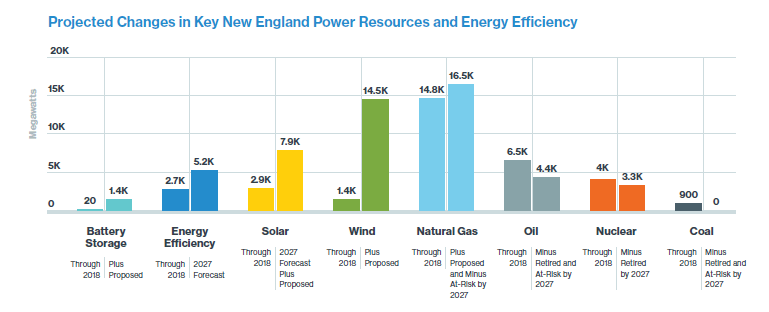New England Solar Generation Projected to More Than Double Through 2027: Annual Outlook

The New England electric grid is moving towards a hybrid system marked by a transition from conventional to renewable generation, and from centrally-dispatched generation to distributed resources, according to the ISO New England Inc.’s 2019 annual outlook. Over 150,000 behind-the-meter solar panels were installed across the region’s six states, with a combined capacity of nearly 2.9 gigawatts through the end of 2018. Solar capacity may reach 7.9 gigawatts in 2027, according to the grid operator’s projections.
The report underscores that nearly all of the behind-the-meter solar installations are connected to local distribution utilities or directly supply homes and businesses. Although the ISO does not dispatch the power from these resources, it has to manage the impact of these resources as they are dramatically changing electricity demand patterns.
The grid operator said that energy security is a key concern as the resource mix evolves, with the retirement of resources with stored fuel, alongside the shift to just-in-time natural gas deliveries and weather-dependent wind and solar. Wind power represents about 65 percent of proposed projects. Last year, the amount of new wind power seeking interconnection was more than double that of natural gas-fueled generation for the first time. ISO-NE projects power demand to trend downward over the next decade, but likely will reverse in the long-term as decarbonization of the transportation and heating sectors rise.
EnerKnol Pulses like this one are powered by the EnerKnol Platform—the first comprehensive database for real-time energy policy tracking. Sign up for a free trial below for access to key regulatory data and deep industry insights across the energy spectrum.
ACCESS FREE TRIAL